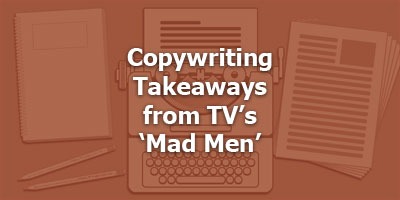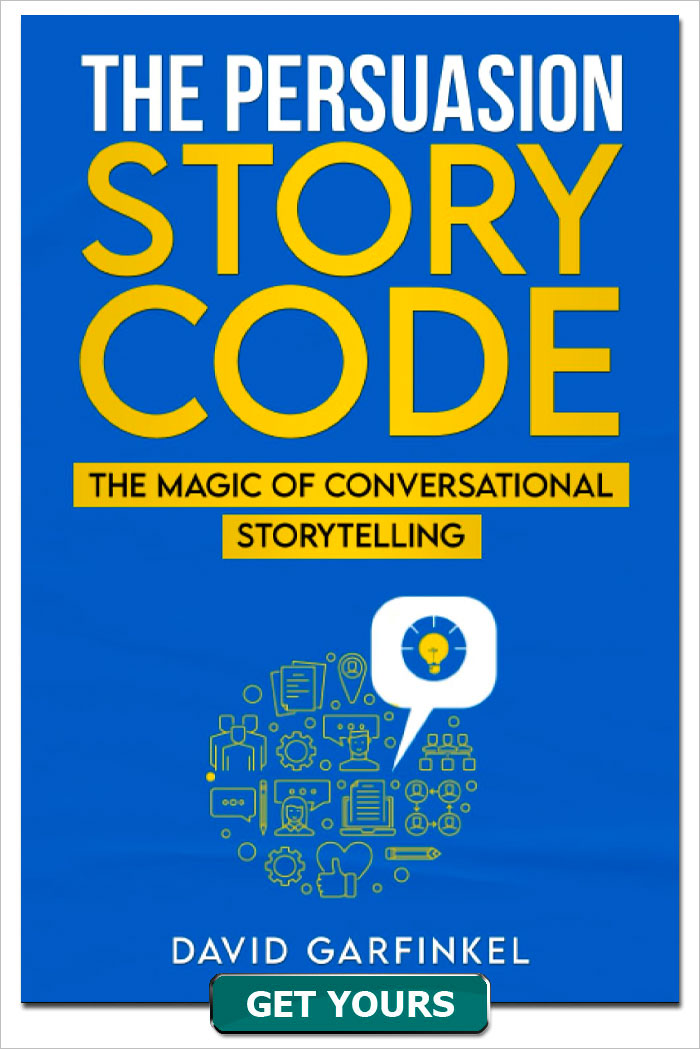Copywriting Takeaways from TV’s ‘Mad Men’
Published by: David Garfinkel on 05-17-2021
Tweet
Among those of us who watch cable television, everyone’s favorite copywriter bad boy is Don Draper of the show ‘Mad Men.’
Along with his secretary who became a copywriter, Peggy Olson, Don Draper is the reason this is the first edition of the Fictional Old Masters Series.
Yes, they are fictional characters. But a lot of factual research went into creating these characters, And I was able to pluck out a few gems from the hours and hours of dialogue they spoke on the show.
My goal today is to make this useful as well as maybe a little entertaining.
So to talk about ‘Mad Men,’ we really have to begin with Matt Weiner. The show was his brainchild.
Now Weiner was not an ad man, much less a Mad Man. In fact, he was a cable TV drama writer. He wrote the pilot for ‘Mad Men,’ on spec, in 1999.
David Chase, who was doing ‘The Sopranos’ for HBO at the time, was so impressed with the script that he hired Weiner to write and executive produce that show. Weiner joined ‘The Sopranos’ team and had a lot of success.
Eight years later, in 2007, Weiner got his show with ‘Mad Men.’ The first episode launched six weeks after the last episode of ‘The Sopranos,’ but on a different cable network, AMC.
‘Mad Men’ won tons of awards, and continued to 2015.
I bring up all this history because it leads to an important question: Consider it was fiction, how authentic was Mad Men, compared to real Madison Avenue advertising?
To answer that question, let’s turn to the acclaimed high-drama film producer Alfred Hitchcock. Weiner has said that Hitchcock was a major influence on him.
And Hitchcock was a much stronger believer in facts that most people would expect. In the 1967 book ‘Hitchcock/Truffaut,’ Hitchcock muses, “What is drama, after all, but life with the dull bits cut out.”
So he was pretty much saying drama should be close to real life. But not like real life, because drama should never be boring.
And Weiner seems to have adopted that attitude. The scenes from ‘Mad Men’ were artistically enhanced, for sure, but they weren’t from a different universe than the one we live in.
Weiner did a lot of research, and he acknowledged in interviews that the character Don Draper was based in part on the famous Chicago copywriter Draper Daniels.
Here’s something Draper Daniels wrote:
NOW… AT LAST… THE NEW AMAZING
Gem of genius slowly blazing.
The one man who, without a doubt
Knows what this business is about.
The man who screams, when words are changed,
That all the changers are deranged.
Still, were he quieter or politer,
He wouldn’t be a copywriter.
So, finally, before we dive into the takeaways, let me introduce you to our two Fictional Old Masters.
Don Draper begins the show as a creative director and junior partner of a Madison Avenue ad agency in New York. He’s a hard drinker and a chain smoker. He has some deep secrets in his past and he has a lot of sex partners besides his wife. Not what you would call a boy scout, back in the day.
He was also what we call a genius copywriter. He had an uncanny knack for coming up with really good advertising ideas. We’ll be focusing more on his copywriter chops and less on his lifestyle.
Peggy Olson started out as Draper’s secretary and moved up to becoming a copywriter, where she got her own office with a door that closed. It may sound trite now. But I worked in a big Rockefeller Center building in New York very close to the fictional Mad Men office, and I had an office with a door that closed. Some of the other writers I worked with didn’t. Not only was it status, but it made a huge difference when you needed to concentrate and write something.
Draper was always pushing Peggy to be better. For as broken a man as he was, in that era, his behavior would be called “supportive,” at times. When he switched agencies, he asked her to go with him. In her character in the show, you can see how difficult it was for women at the time, but even so, how it was possible to grow and succeed.
In the show, we then proceed to the five takeaways.
Keywords: mad me advertising copywriting









